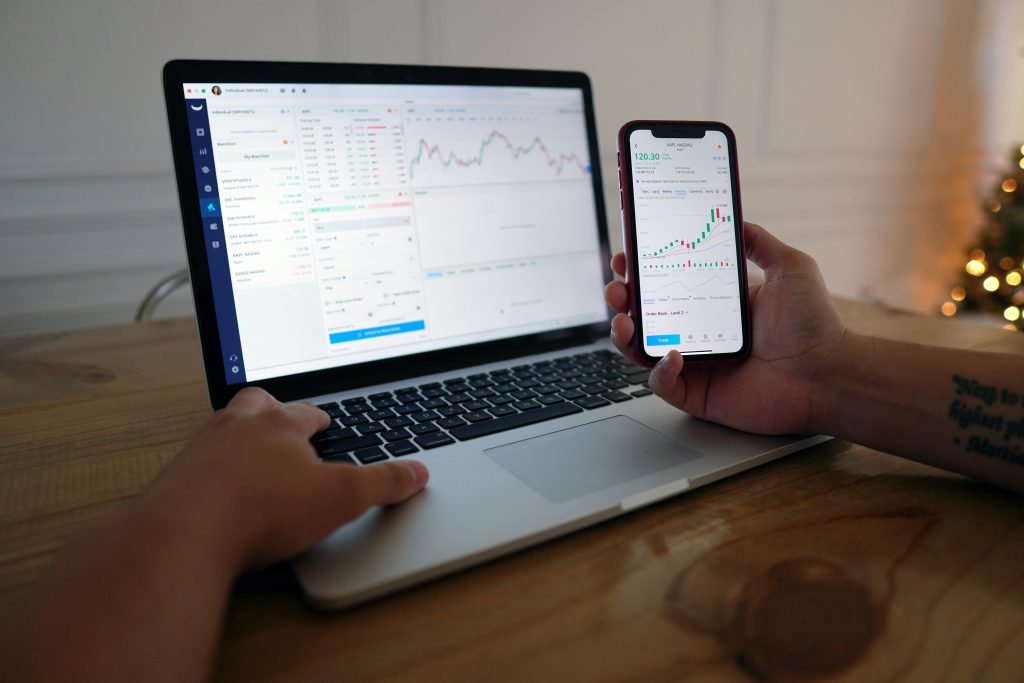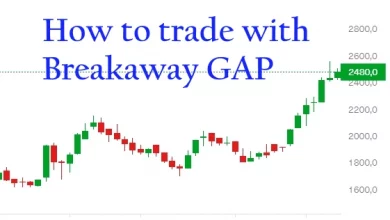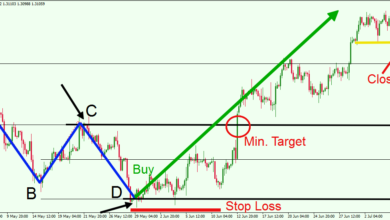
There are a huge number of different strategies on the market, ranging from simple ‘buy and hold’ for dummies to complex financial manipulations with various derivatives.
But there is one type of trading that triggers the movement and volatility of the market – intraday trading or day trading. This approach gives many traders the opportunity to earn decent money or lose a lot. Let’s discuss intraday trading strategies, basics of intraday trading and how it works.
Table of contents
What is intraday option trading
Day trading strategy is a type of exchange trading when positions are opened and closed during one trading session. That is, despite the outcome of the trade, all positions must be closed at the end of the day. This is monitored either by the trader himself or by the broker who closes all transactions a few minutes before the end of the session.
Day trading for a living appeared in 1996 in the United States. Since then, a wide variety of people, from housewives to students, have come to the exchange to make money. Bank Nifty is a popular platform for fiat trading, and the cryptocurrency market has opened a bunch of new opportunities.
But most of them, trading intraday, lose their money. For example, according to NASDAQ, more than 70% of traders lose all their funds in the first year of trading. But thanks to this, intraday trading became the engine for all markets, the basis for volatility and provided more liquidity for everyone.
With an intraday trading system, the bet is placed not on strong price changes, but on a large number of different price changes. Therefore, the number of transactions of a trader (especially a scalper) can go far beyond a hundred.
There are a multitude of trading methods that can be used with such style because asset prices are sensitive to various news, politics and other information. Any reports, statistics can greatly affect the value of a stock, so it’s important to track them throughout the session.
The assets for intraday strategies can be the same securities as for other approaches. The main criterion of choice is that they are quite volatile and very liquid. These assets are usually stocks of top companies, futures, cryptocurrencies and fiat currency pairs.
Day trading is very unpredictable, and a very small percentage of traders, even among professionals, can show stable results over several years. Unlike passive investing, psychology and the human factor play a huge role here.
Who is it suitable for?
Intraday trading for beginners is not the easiest thing to understand. Nevertheless, every year, a large number of people rush to exchanges in search of easy money and get quickly disappointed when they learn that the exchange is not a casino, there is no profit without effort.
When such a trade strategy is exercised, inexperienced users often don’t understand what they are doing and try to win rather than make money. They make deals hoping for luck and intuition, they react emotionally to price swings, make hasty deals and many other mistakes for which the market punishes them.
But the best strategy for intraday trading is to act without emotions at all.
Like many other areas, intraday trading requires certain qualities from a person. To succeed in this trading style, you need to possess:
- High stress tolerance
- The ability not to react to minor failures
- Focus and concentration on many things at once
- Patience
- The ability to work and make decisions instantly
People who don’t hesitate and stay guided by logic, not fear, are most likely to stay on the market for a long time and make money using the best stocks for intraday trading.
Day trading is definitely not suitable for those who:
- Do not know how to control emotions, since losses are inevitable;
- Perceive losses as expenses, not an investment in their knowledge and experience;
- Are not serious about trading and regard it as a game;
- Do not want to learn new things (generally refers to any business);
- Come to exchanges to satisfy their need for gambling and have fun;
- Wish to make money quickly.
Also, an intraday trading strategy is not suitable for those who do not have time to work full-time during the trading session and those who have constant distractions, such as the basic job, small kids around, etc.
Any exchange is primarily a competitive ground for other traders and market participants. Therefore, if you are not ready for a lot of struggle and rivalry, it is worth reconsidering your trading style and things to invest in.
Pros and cons of day trading techniques
If you are sure that this trading style suits you, it’s high time to weigh all ‘for’ and ‘against’.
Advantages of intraday strategy
- Independence from global news. Traders within the day are little dependent on some global world events. For example, when the Covid-19 pandemics started, traders simply turned their positions in the other direction, unlike investors who, in a panic, began to sell their assets when they were down. Thus, traders manage to earn much more often – volatility helps them with that.
- Low entry threshold. It takes a lot of experience to start seeing a significant return on investment. As practice shows, 6 months of experience is enough for traders to see positive results. This makes it easier to enter the market for many people who do not have solid capital. Besides, in case something goes wrong, losses won’t be disastrous.
- Short-term results. Don’t plan trading tomorrow. When long-term positions are opened, a trader remains in the state of suspension, since it is not clear where the market will go next. Intraday traders do not have this problem, because at the end of each session, they clearly see how much money has been earned or lost over the past day.
- Fast response to any changes. Intraday trading techniques imply checking charts on a constant basis. Thus, day traders are the first (after the algorithms, of course) who react to any major price changes and alter positions before the rest of the market realizes what is happening.
Downsides of intraday trading methods
- Time. This approach requires a huge amount of time spent in front of the monitor. Yes, some traders try to make predictions and calculations in advance, enter the trade at the beginning of the session and close it at the end. But for the most part, you have to constantly watch the charts in anticipation of the right moment to enter.
- Stress. Fast trading requires a tremendous amount of effort from a person, primarily psychological. Not everyone will be able to stand losses and stay patient. Traders can become nervous over a missed opportunity or an incorrectly placed order. The pressure and unfortunate traders might eventually lead to burnout, psychological traumas from stress and even illness.
- Commissions. A large number of deals means a large amount of commissions for the broker. Sometimes these commissions can eat up most of the profit and sometimes – everything you earn.
- High risks. Despite the fact that small amounts of money are used for deals, the risk is still huge. All starters sooner or later learn that intraday trading is one of the riskiest styles. According to various sources, only 1-5% of traders have been trading continuously for 5 years, not leaving the market for one reason or another.
Day trading strategies that work
Scalping
This method is based on literally cutting a few points of the price in any direction. This is not a simple day trading strategy but can be quite efficient. To get the maximum out of it, a user should determine the thresholds for closing deals, for example, 5×5 (5 points up or down) and put a stop loss (automatic sell in case of a drawdown) at the level of 5. The upper limit is determined by the trader himself, but it is best to set the same number of points as in the stop loss.
In order to find the ideal entry moment, traders use technical analysis. It is based on moving average strategy, expiry day strategy, candlestick patterns and swing trading instruments. This helps to more accurately choose the opening positions and close most deals with profits.
It is also necessary to use explicit trends in order to make more trades with a profit. Scalping becomes the most successful intraday strategy when a user follows one simple rule: there must be 50 +% of profitable transactions. If you do not forget to set a stop loss and calmly close unprofitable trades, such tactics can bring good dividends in the long run.
Trading on the news
This strategy is not as widespread as scalping but still deserves the attention of newbies. A large number of assets that are traded within the day are very sensitive to the news background. Stocks may fall or rise by 15-20% over a few hours due to certain news released during the trading session.
The main task of a trader in such trading is to look for news that may affect the stock. This can be a speech by a major political figure, an OPEC meeting, ICO, new services released by a company and many other events. At the same time, in order to use this news for your benefit, you need to be able to correctly interpret it and understand where other traders and funds will go.
It’s one of simple trading strategies in terms of load since there’s no need to relentlessly watch the market during the entire trading session. It will be necessary to concentrate only when certain news is released, which are usually known in advance and included in the economic calendar.
Volume analysis

One of the newest stock trading strategies that work, volume analysis is gaining popularity around the world at the moment. It boils down to assessing the number of transactions and orders submitted at the current time. The trader just needs to keep track of the market volumes (for example, day India indicators or crypto market movements) and the order book. Such tools as moving average can also be helpful.
As soon as the volume increases and there are a large number of buy orders, the trader also needs to buy, since the price will certainly go up from a large volume of purchases. The same actions are done in the opposite direction when the asset is being sold out.
Trend trading
If you look at the charts, they all display pronounced directions for an increase or decrease in prices. A similar phenomenon can also be observed within the day. It is called a trend. It is formed and becomes clear about an hour and a half after the start of trading. Many traders enter deals after defining a trend and can get a good profit even with a single order. To master this strategy, you need to be able to see such trends and stay on the lookout, since asset price movement can turn back at any moment.
You can also find alternative trading strategies, for example, buying or selling against the trend, dealing by levels, etc. The approaches presented here are currently the most popular strategies that are easy to learn and suitable for a novice trader.
Tips for trading
Keep learning
Financial markets do not stand still – it’s crucial to see what’s going on. Every day, new strategies appear, the old ones become outdated and do not work. Therefore, it is necessary to constantly improve the best technique for intraday trading. Read books, trading blogs and financial articles. Create a demo account to make a few deals and see how your approaches work.
Use reliable sources of info
Trading information is everything but you should filter it out. Do not trust bloggers or traders who guarantee profits and make promises – it’s not professional. The best analyst of the currency market is you, even if you lack experience.
Read the news on large sites and trustworthy aggregators. Such projects have a large team of editors who quickly post information and double-check it. If you trade cryptocurrencies, consider CoinBase and Investopedia: there, the risk of receiving fake news is minimal
Be realistic
Yes, some seasoned traders manage to earn several million dollars in a day. But they are all professionals with huge capital and great informational support. If you are just taking your first steps in trading, don’t count on making stellar profits on the very first day. Starters should first learn how not to lose money with intensive trading and keep tabs on order expiry.
Do not aim to earn $100,000 per month unless your capital is several million. Most traders make no more than 3-5% per month, and those who have been on the market for a long time earn up to 10% per month on average.
Plan
Before you get married, you need to think about how you will get a divorce – the best trading strategy should be approached like that, as well. Before entering a trade, think when you will exit, what the stop loss will be, when it is better to take profit and what to do next. You should have a clear trading plan in your head, which you will obey unquestioningly.
Choose suitable intraday trading stocks
It is enough to handle 1-2 assets. Watch only for them and make decisions regarding these currencies only. It makes no sense to watch the price of 10 assets at once – you won’t be able to focus properly on any of them.
Devote your time
Intraday trading takes a lot of time. You shouldn’t do it if you can’t devote a few hours a day to watching the market. Also, don’t trade if you have distractions at home or in the office. Concentration is a must.
You also need to choose the optimal period for your activity. In the morning, when all trades are just starting, volatility is very high since there’s a flood of transactions. If you are a beginner, it is best to refrain from deals in the first 1.5 hours
Control your emotions
Shares trading puts a huge load on the nervous system. Under the influence of losses, it is very easy to lose your head and try to recoup. This leads to even greater risks. Also, do not be greedy and don’t keep your profitable deals open for too long in the hope of getting a few more dollars. The trend can change at any second and you will lose money.
Take risks right
Investors can afford to invest10%-20% on a particular deal. With short-term deals, risks are much higher, and putting even 5% into a deal can result in disastrous losses. That is why up to 1-3% of the deposit should be allocated for each transaction. So, in case of loss, the grip of emotions will be weaker, which means trading will continue more successfully.
How to start intraday trading?
The process boils down to the list of a few steps:
- Open an account on a crypto exchange or on a broker’s website;
- Decide on the type of assets and choose 1-2 ones you like;
- Figure out your best intraday trading strategy;
- Start – open a few deals;
- Stick to your strategy, fix the results in a diary every day;
- Improve your skills and make more money;
- Enjoy your income.
Conclusion
When it comes to short-term deals, the risk is high and many traders tend to be guided by their emotions. Do not let fear and greed take over your cold mind. Think over your next step and keep tabs on the market – timely reaction is your key to success. Hopefully, with this guide to day trading, you will enjoy a bright start!




